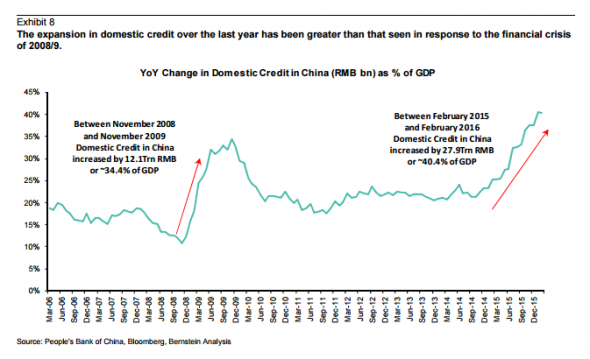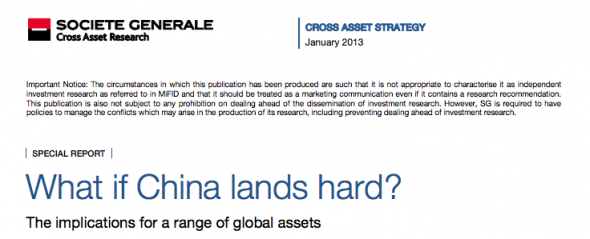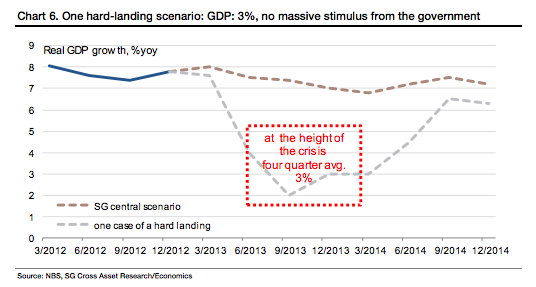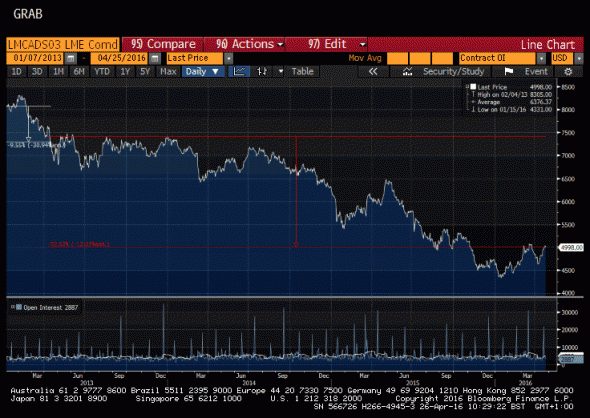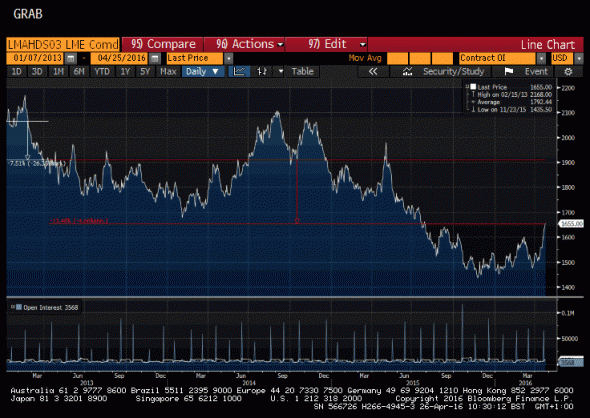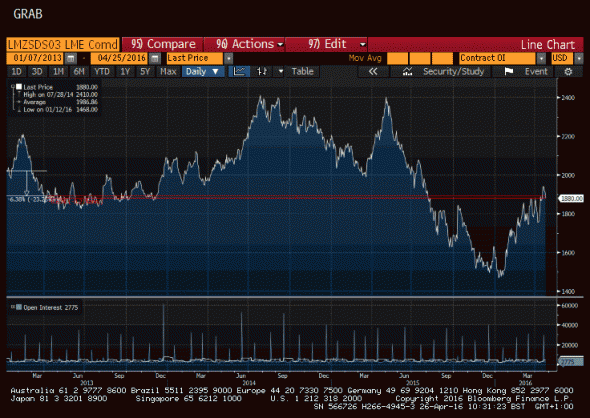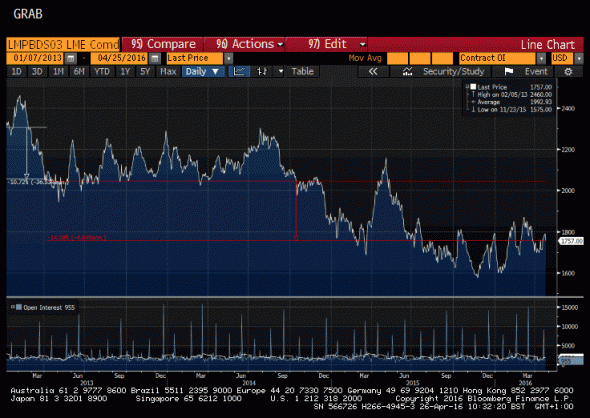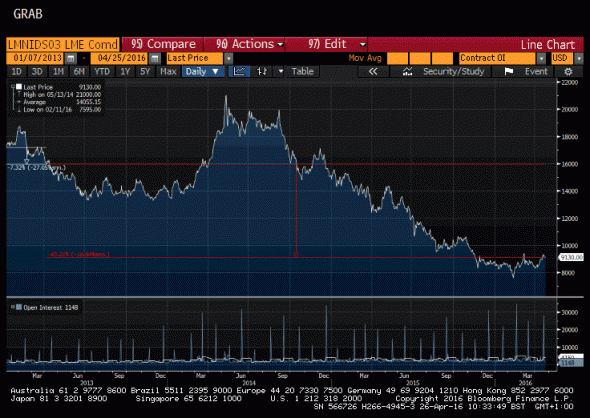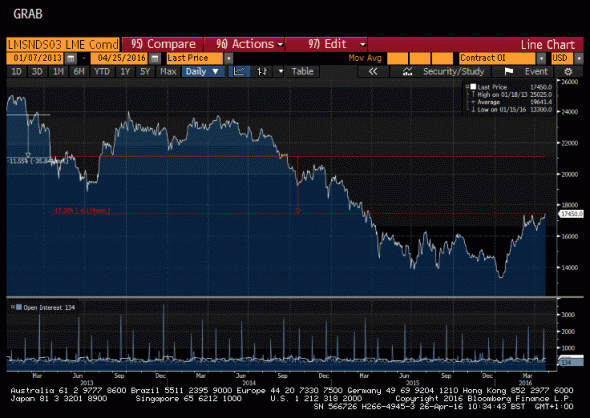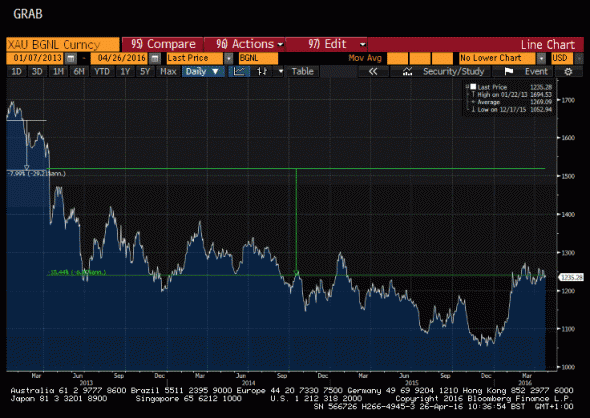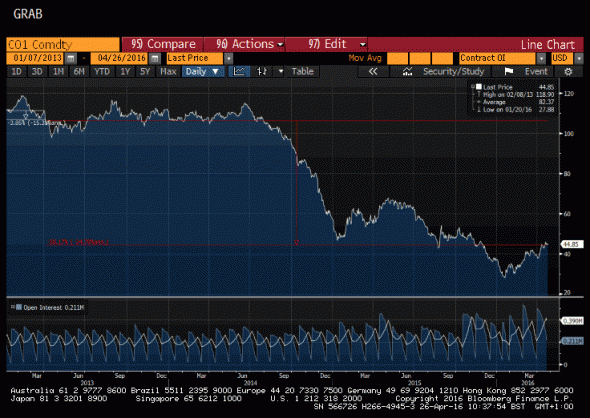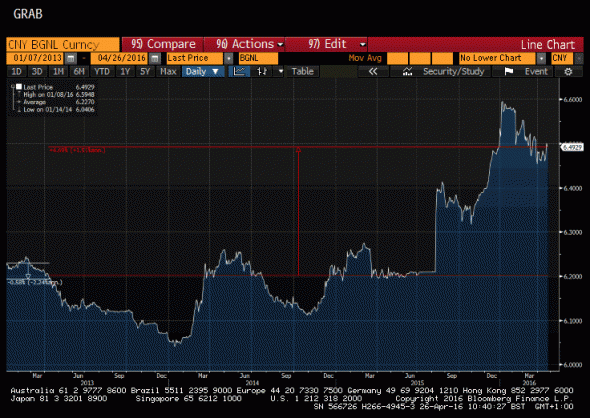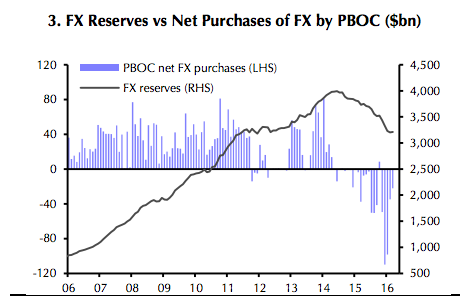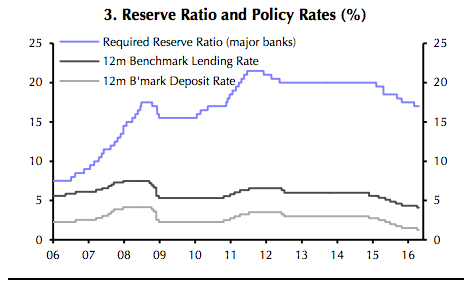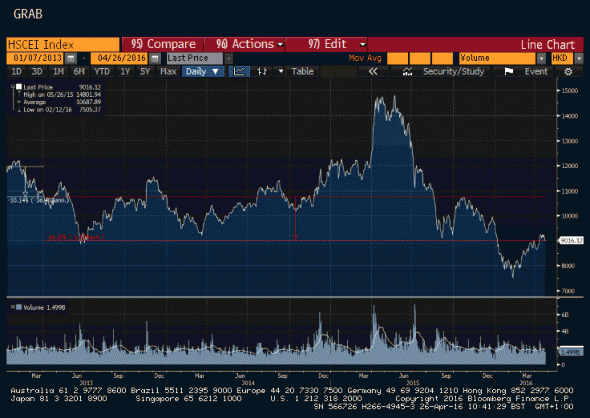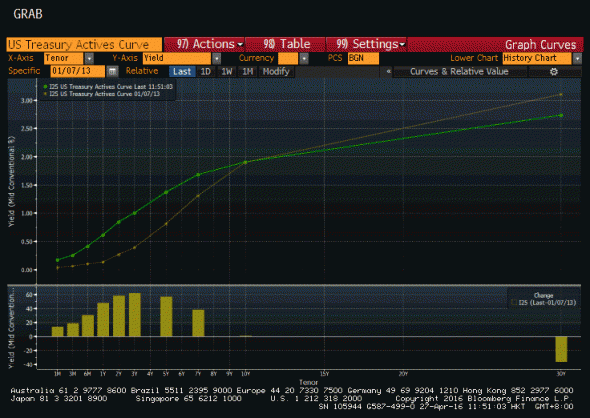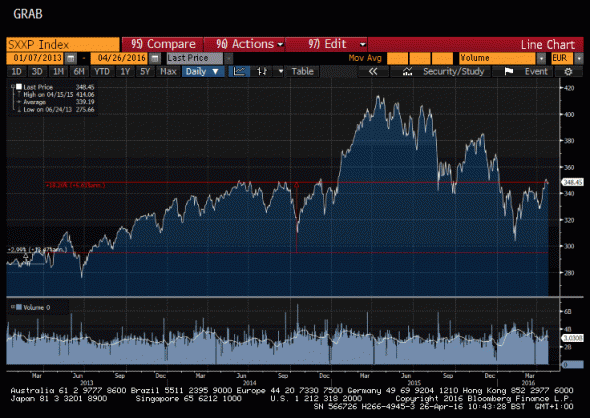笨狼發牢騷
發發牢騷,解解悶,消消愁這一來李克強那壯士斷腕的改革決心就,就給擱置起來了。俗話說“短疼不如長疼”,習近平寧願退幾步也得把局麵穩住,也許他覺得還有第二屆的時間,大權在手就有機會。一季幾萬億一砸。經濟下行加劇的趨勢就給扭轉過來了。這胡溫庸政,在一季還頗見成效。
法興姚煒
經濟複蘇的主要動力就來自於信貸擴張:其中三月信貸同比增速為15.8%,創下近20個月峰值。一季度信貸擴張達則到了7.5萬億人民幣,同比激增58%,占比名義GDP46.5%的水平為曆史之最。
法興進一步指數,1-3月信貸擴張曆史罕見說明政府對於一季度的經濟增長十分重視。但是能否保持這種刺激方式卻存在疑問。在房價飆升的環境下,資產泡沫跡象已經出現。如果信貸持續擴張的話,很有可能帶來更多的風險,包括資本外流加劇和貨幣貶值。
瑞銀汪濤
未來三種可能的演變結果。
在最理想的狀況下,中國可能大體解決現有債務問題,就和十年前的結果類似。這需要政府持續信貸擴張和財政刺激的同時進行結構性改革,從而幫助負債率較低的行業和新興行業拉起經濟增長。全球需求複蘇也是不可或缺的重要一環。
比較現實的結果是,中國可能無法等到全球經濟需求和增速的複蘇。政府將被迫在穩增長和控製信貸增長之間做出平衡,逐漸進行債務減記/重組並關閉僵屍企業。這種情況下,短期的經濟增速將會放緩,但是長期的經濟活力將得到保留。
最糟糕的一種情況就是中國政府改革步伐緩慢,過多的依賴杠杆因素。這樣雖然短期的經濟可能維持強勁,但是債務問題會不斷惡化。看起來靚麗的數據很有可能掩蓋實際問題,導致更多的資源被投向低效率甚至是無效率的行業。隨著資產價格修正的到來,銀行可用流動性將逐漸消逝,在加上過早的開放資本項,整個金融體係很有可能難以抵擋係統性問題的衝擊。即便中國固有的特色可能不會令傳統意義上的銀行危機出現,但是產能出清和解決壞債的步伐必然會受到嚴重拖累。
(下略)
法國農貿銀行
財政和貨幣刺激是中國短期經濟反彈的主要動力。這種刺激在一段時間內依然可以延續,但是並不會帶來中期結構性的複蘇。在國企就業問題上的舉棋不定、政府開支和信貸對傳統行業的支持有限意味著中國的經濟轉型道阻且長。



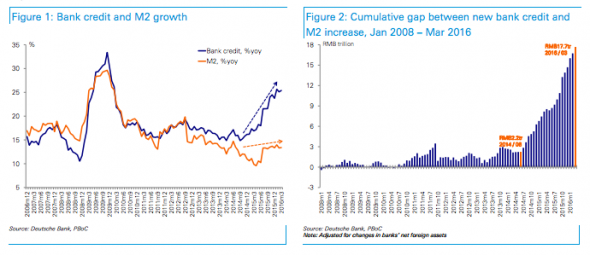
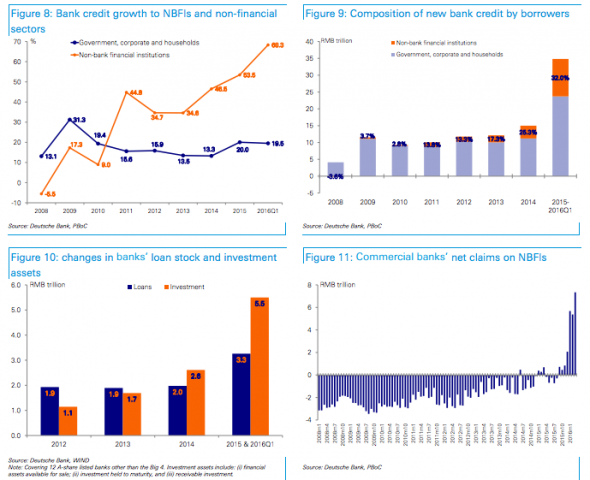
2016年04月10日
如果說曆史是任人打扮的小姑娘,那麽,統計數據也可以用來粉飾業績。不僅中國如此,國外也一樣。不過,無論如何粉飾,都經不起推敲。一旦不真實,是可以被發現的,因為數據之間存在彼此的勾稽關係。鑒於最近大家對中國經濟是否見底爭議頗大,筆者不妨通過對統計數據的深度剖析來揭示GDP背後中國經濟的真實狀況。
2015年GDP增速隻有5%嗎
不少很資深的國內經濟學家,也對GDP數據產生懷疑,認為去年6.9%的GDP增速是虛假的。海外的輿論更是對中國的GDP提出質疑,或許是因為2015年進口額下降了13.2%,表明內需大幅下降。不過,GDP所覆蓋的經濟指標實在太廣了,不能僅就一兩項指標來“略見一斑”。但統計部門需要反思的是,為何大家總不相信統計數據。不過,本人認為,僅就GDP這一個數據而言還是比較接近現實的。
仍以中國進口貿易為例,之所以進口額大幅下降,與中國進口商品的結構有關。中國已經是全球製造業的第一大國,故進口的多以大宗商品為主,如鐵礦石、原油等,這些大宗商品的價格在2015年下降幅度甚至超過20%,即便進口量沒有下降,價格因素也會導致進口額的大幅下降。
目前,中國在全球大宗商品消費市場份額:水泥、豬肉、鎳、煤炭、鋼鐵、鋁、銅、鉛都超過40%,因此,如果隻統計第一、第二產業的GDP,則中國的GDP也明顯超過美國而成為全球老大。中美之間的GDP差距實際是在第三產業,中國第三產業的占比在2015年首次超過50%,但美國卻要占到80%左右。
因此,大家在評估中國GDP增速的時候,往往隻關注實體經濟的狀況,如企業的盈利狀況,包括經濟學家們也是如此。這也不奇怪,術業有專攻,經濟學家們不太研究眾多統計數據之間的關係和結構。如果隻統計第一、第二產業GDP之和的增速,按我的估算,中國2015年的GDP增速為5.6%,確實與大家的判斷比較接近。
但大家的習慣總是不全麵去看數據,如2015年M2的增速是13.3%,比2014年上升了1.1個百分點,但GDP增速卻比2014年下降了0.5個百分點。沒有人質疑M2的真實性吧,M2也多多少少能代表一個國家的經濟體量。中國的M2是美國的兩倍,但經濟規模卻隻有美國的60%,明顯不相稱。如果在M2如此龐大的基礎上,經濟規模還要縮減,那麽,大家是否又要質疑GDP被低估了呢?
的確,金融不創造“價值”,但創造GDP。2015年金融業的GDP增速達到15.9%,這主要是靠股市活躍的交易所做的貢獻,當然,如果沒有銀行業予以資金的支持,信托、保險業的積極參與,證券業自身也不可能有那麽大能量。2015年A股的交易金額竟然要占全球股市交易金額三分之一以上,使得第三產業的GDP增速達到8.3%。如果刨去股市對GDP的貢獻,那麽,去年名義GDP增速估計要破6了。
小結一下:中國目前及今後的經濟亮點是在服務業,但大家的關注點還是在製造業。政府為了穩增長,所投放的巨額貨幣,脫實向虛,或多或少地創造一定的GDP增量。實際上,大家更應該關注穩增長的負麵效應,而不是質疑GDP的真實性——都已經花那麽大代價去穩增長了。
投資驅動:這駕馬車效率最低
中國的GDP與全球其他國家GDP在構成上的最大差異,就是固定資產投資(資本形成總額)的占比過高,即中國GDP增速對投資的依賴度太高。世界銀行數據庫揭示,中國2011-2014這四年間,資本形成(也就是通俗講的投資)占GDP的比重,分別為47%、47%、48%、46%。與中國該指標相同或超過中國的,隻有四個國家:赤道幾內亞、阿爾及利亞、莫桑比克和不丹。
2014年的資本形成額占GDP比重的數據中,美國19%、德國19%,日本21%,韓國29%、中國香港24%、俄羅斯20%、印度32%、巴西20%。可見中國的投資占比基本超過發達國家的一倍,同時,也遠高於發展中國家。實際上,中國的這一占比幾乎是全球平均的兩倍(全球2013年的數據為22.2%)。2015年中國的資本形成總額在GDP中的占比降至44%,仍然很高。
假如投資的高增長可以帶來企業盈利的相應增長,或者不至於讓企業和社會的債務率快速上升,這樣的投資是無可指責的。但中國自2001年至2015年,固定資產投資年均增速為22%,同期GDP的年均增速在9%左右。近5-6年來債務的增長一直維持在兩位數,尤其是去年國有企業的債務增長超過18%。
投資效率之所以低下,主要有幾個原因:一是政府主導投資,各地開展GDP增長錦標賽,大興土木,全國城市麵積的擴大規模遠超人口流入的規模。投資往往不是市場導向,市場在資源配置中很難真正起到決定性作用。
二是區域發展戰略上,先後實施了西部大開發、東北振興和中部崛起三大戰略,這三大板塊的投資增速大大超過東部地區,但資金流向與人口流向相背離,生產要素之間的錯配導致投資效率低下,即投資占比高的地區,GDP占比沒有得到相應提升(下圖)。如東部地區投資占比從2001年的60%降至40%,但GDP份額隻是略有下降,仍在50%以上。中部、西部和東北的固定資產投資占比不斷上升,但對本區域的經濟拉動作用不明顯,所以,人口不斷外流。

三是國有企業獲得更多的信貸資金支持,但投入產出比遠低於民營企業,同時又加劇了產能過剩問題,導致國企的債務高企,2015年債務占GDP的比重達到116%。為何經營業績差的國有企業反而能獲得更多的貸款支持呢?因為國企的背後有政府的信用作擔保,但民營企業,尤其是輕資產的民營企業則缺乏融資渠道。
盡管2016年第一、二季度的固定資產投資增速會維持反彈趨勢,但預測全年增速會略低於2015年,大約在9%左右。
簡單概括,投資的三大主要問題是,資金流與人口流的錯配、政府與市場之間的投資錯位和高投資與高回報之間的逆向選擇。
消費馬車速度均勻:卻在扭曲前行
消費與居民的收入水平和收入結構有很大相關性。回顧一下曆年GDP中消費的貢獻,都是很穩定的,且消費的增速的斜率也很平穩,從過去每年13-14%,降至目前的10-11%。此外,消費升級也如期而至,表現為吃住的占比明顯下降,而交通通訊、文化娛樂和醫療保健的支出增加。
值得一提的是,國家統計局在今年1月份對CPI的八大類商品和服務的權重做了調整:“本輪基期的食品煙酒權數下降3.4個百分點(其中,舊口徑食品權數下降3.2個百分點),生活用品及服務權數下降1.1個百分點;居住權數上升2.2個百分點,交通和通信權數上升1.1個百分點,醫療保健權數上升1.3個百分點。”
按照新的權重規則推算,2016年肉禽類價格權重從2015年的6.4%調整到2016年的4.35%,其中豬肉價格權重從上一年的3%調低到2.34%。這樣,豬肉價格上漲對CPI的拉動作用就有所緩解。盡管大家對於通脹預期強烈,但本人判斷這輪物價上漲的幅度有限,即不會超過2010-11年CPI漲幅。在全球經濟疲弱的背景下,全年估計還是很難突破3%。所謂滯脹之說,本人認為可能性不大。
消費這駕馬車在中國GDP中的比重一直波動不大,中國的最終消費對GDP的貢獻在90年代時曾經占到65%,之後大幅回落,如今也不過回升到50%,比發達國家要落後很多,如美國、日本都在80%以上;即便與新興國家比,也明顯落後,如印度也要占到70%。同時,消費存在一定的扭曲現象,這與中國居民的收入結構有很大關係。
支出法下最終消費占GDP比重

中國已經是全球奢侈品消費的第一大國,但中國還是存在有效需求不足問題。我曾經就國人到日本旅遊購買馬桶蓋現象做過細致分析,發現智能馬桶中國潛在消費者的數量大約為2500萬戶家庭,但迄今為止中國還沒有能夠使用坐便器的人口超過6億,也就是說,超過6億的人口是買不起馬桶的。因此,與其強調有效供給不足問題,不如更應關注有效需求不足導致的產能過剩問題。
有效需求不足的背後是中國中產階層占比很小,即中國的貧富差距懸殊,從國家統計局的統計年鑒上可以發現,盡管城鄉之間的收入差距有所縮小,但城鎮居民的收入差距卻在擴大,如根據國家統計局的數據,城鎮最高收入10%家庭與最低收入10%家庭的收入差距,在最近5年內是擴大的。
中國在2015年的出境遊人次大約是1.2億,但其中很大一部分是去港澳,且不過夜。按本人估算,2014年除去港澳出境人次後,出境且過夜的人次大約在5000萬左右,如果再剔除多次出國因素,出國旅遊的人口也就4000萬左右,占總人口2.9%。因此,中國的富人和中產的數量,估計最多也就7000萬左右,占總人口數量5%左右。
對於中國人出國旅遊的平均消費額全球最高的現象,我認為倒恰恰是中產階層占比較少、收入水平不高的體現。因為出國消費的大部分錢都用在購物上了,而購物的目的是為了逃避高關稅,把旅遊的錢“賺回來”。這與90年代國內旅遊的遊客拿著大包小包返回的道理是一樣的。所以,中國消費這駕馬車是有點扭曲的,扭曲的背後是居民收入結構分布的畸形。
不過,2012年以來,我一直認為居民的消費規模是被低估的,主要被低估的部分是支出法下的服務性消費。如存在無法統計或經營者為避稅而少報現象,這些服務消費可能發生在某些餐飲、娛樂休閑、保健、家政服務等服務業的子行業中(下圖,詳見《中國經濟結構存在誤判》2012)。

按本人的估算,最終消費占GDP的比重,可能低估了兩個百分點左右,這也是我不認可GDP數據虛高的原因。從GDP的構成看,資本形成倒是可能被高估的,但消費則被低估。從區域看,民營經濟發達的省份,如浙江、廣東,消費是被低估的;而在國企占比較高或落後的地區,投資往往被高估。
出口全球份額第一:但這駕馬車在拖後腿
2015年出口增速為-1.8%,是2009年以後首次出現的負增長。而在2015年的兩會上,商務部部長預測當年出口增速為6%。反差如此之大,隻能說明全球經濟很低迷,同時也說明中國的出口優勢在削弱。今年2月份中國出口增速下降超過20%,為09年次貸危機之後的最低點。
盡管2015年中國出口增速出現了負增長,但出口額在全球的市場份額卻繼續上升,超過13%,原因是其他國家出口降幅更大。但中國作為出口第一大國,與美國、日本和德國這些出口大國相比,有一個顯著的差別,就是貨物出口中的加工貿易占比過高。2015年,一般貿易與加工貿易之比是6:4,盡管加工貿易的占比過去曾達到50%左右,近年來已經有所下降,但如此之高的占比,還是反映出中國的仍然不是外貿強國,而隻是高度依賴於為發達國家提供產品加工、組裝服務的外貿大國而已。
中國未來的出口的前景不容樂觀,壓力主要來自三個方麵:一是國內勞動力成本的上升。勞動力價格的上升具有剛性,這已經導致國內的部分製造業向勞動力價格更加低廉的東南亞國家轉移。
二是未來人民幣貶值幅度或有限,出口的匯率優勢難以形成。中國自2014年以來出口增速就出現了明顯的回落,盡管人民幣對美元不再升值,但由於其他貨幣的貶值,導致人民幣的實際有效匯率仍是上升的。今後為了應對資本外流的壓力,估計人民幣的貶值幅度很有限,形成不了匯率優勢。
三是美國、德國的再工業化對中國出口的負麵影響。機械工業信息研究院課題組研究員鞠恩民稱,中國製造業成本不僅高於東南亞、南亞、東歐,並且達到了美國製造業成本的90%以上,其中珠三角、長三角達到美國製造業成本的95%,中國製造業成本競爭力正麵臨壓力,2004-2014年,中國的年均工資增長率一直處於10%-20%區間。
中國製造業中的某些成本如電力成本、物流成本等都很高;勞動力成本也在快速上升。西方國家如美國、德國等隨著機器人的廣泛使用,成本有望進一步下降。如德國推出了工業4.0,法國也準備效仿德國進行再工業化;德國2月份的出口額就出現了大幅回升。因此,中國出口貿易所麵臨的挑戰,將是全方位的,既來自發達國家,又來自發展中國家;既有成本壓力,又有技術瓶頸。
估計2016年的出口增速仍然為負,大約在-2%到-4%之間。
通過對三駕馬車的分析,我們很難得出一個樂觀的結論。盡管今年第一季度的投資和盈利數據出現一定的好轉,但這似乎隻是短暫的反彈,2015年貨幣政策和財政政策都是超寬鬆和積極,總該有所反應吧。
某些光鮮數據的背後,存在太多的缺陷和矛盾。盡管中國已經是全球製造業第一大國,重化工業化也已經步入後期,但競爭力依然不強。投資主要體現為大興土木,在設備投資和研發投資等方麵的占比太低。建立在廉價勞動力基礎上的出口優勢,終究會轉化為出口劣勢。消費原本應該是拉動經濟增長的最大一匹馬,但一味追求高增長高投資,降低了幾代人的生活質量。改革滯後導致收入結構的扭曲,讓消費對GDP的貢獻處於較低的水平。
如果說,資本市場的價格波動不那麽合乎邏輯,經濟下行也會出現牛市;如果說,足球的輸贏還有運氣的成分,踢得不好還能出線的話,那麽,經濟發展卻是非常符合邏輯的,很難有僥幸擺脫困局的機會。如出國人群的平均消費額全球第一,改變不了國內產能過剩的現狀;外貿出口份額的全球第一,改變不了2016年出口繼續負增長的趨勢;GDP增速的全球領先,是建立在全社會債務水平增速更快的基礎之上。
什麽樣的體製,就會有什麽樣的經濟特征;設立什麽樣的目標,就會為了實現該目標而付出相應的代價。如果改革不推進,結果就不會出人意料。

CHINA was right to turn on the credit taps to prop up growth after the global financial crisis. It was wrong not to turn them off again. The country’s debt has increased just as quickly over the past two years as in the two years after the 2008 crunch. Its debt-to-GDP ratio has soared from 150% to nearly 260% over a decade, the kind of surge that is usually followed by a financial bust or an abrupt slowdown.
China will not be an exception to that rule. Problem loans have doubled in two years and, officially, are already 5.5% of banks’ total lending. The reality is grimmer. Roughly two-fifths of new debt is swallowed by interest on existing loans; in 2014, 16% of the 1,000 biggest Chinese firms owed more in interest than they earned before tax. China requires more and more credit to generate less and less growth: it now takes nearly four yuan of new borrowing to generate one yuan of additional GDP, up from just over one yuan of credit before the financial crisis. With the government’s connivance, debt levels can probably keep climbing for a while, perhaps even for a few more years. But not for ever.
When the debt cycle turns, both asset prices and the real economy will be in for a shock. That won’t be fun for anyone. It is true that China has been fastidious in capping its external liabilities (it is a net creditor). Its dangers are home-made. But the damage from a big Chinese credit blow-up would still be immense. China is the world’s second-biggest economy; its banking sector is the biggest, with assets equivalent to 40% of global GDP. Its stockmarkets, even after last year’s crash, are together worth $6 trillion, second only to America’s. And its bond market, at $7.5 trillion, is the world’s third-biggest and growing fast. A mere 2% devaluation of the yuan last summer sent global stockmarkets crashing; a bigger bust would do far worse. A mild economic slowdown caused trouble for commodity exporters around the world; a hard landing would be painful for all those who benefit from Chinese demand.
Brace, brace
Optimists have drawn comfort from two ideas. First, over three-plus decades of reform, China’s officials have consistently shown that once they identified problems, they had the will and skill to fix them. Second, control of the financial system—the state owns the major banks and most of their biggest debtors—gave them time to clean things up.
Both these sources of comfort are fading away. This is a government not so much guiding events as struggling to keep up with them. In the past year alone, China has spent nearly $200 billion to prop up the stockmarket; $65 billion of bank loans have gone bad; financial frauds have cost investors at least $20 billion; and $600 billion of capital has left the country. To help pump up growth, officials have inflated a property bubble. Debt is still expanding twice as fast as the economy.
At the same time, as our special report this week shows, the government’s grip on finance is slipping. Despite repeated efforts to restrain them, loosely regulated forms of lending are growing quickly: such “shadow assets” have increased by more than 30% annually over the past three years. In theory, shadow banks diversify sources of credit and spread risk away from the regular banks. In practice, the lines between the shadow and formal banking systems are badly blurred.
That creates two risks. The first is higher-than-expected losses for the banks. Hungry for profits in a slowing economy, plenty of Chinese banks have mis-categorised risky loans as investments to dodge scrutiny and lessen capital requirements. These shadow loans were worth roughly 16% of standard loans in mid-2015, up from just 4% in 2012. The second risk is liquidity. The banks have become ever more reliant on “wealth management products”, whereby they pay higher rates for what are, in effect, short-term deposits and put them into longer-term assets. For years China restricted bank loans to less than 75% of their deposit base, ensuring that they had plenty of cash in reserve. Now the real level is nearing 100%, a threshold where a sudden shortage in funding—the classic precursor to banking crises—is well within the realm of possibility. Midsized banks have been the most active in expanding; they are the place to look for sudden trouble.
Pandamonium
The end to China’s debt build-up would not look exactly like past financial blow-ups. China’s shadow-banking system is big, but it has not spawned any products nearly as complex or international in reach as America’s bundles of subprime mortgages in 2008. Its relatively insulated financial system means that parallels with the 1997-98 Asian crisis, in which countries from Thailand to South Korea borrowed too much from abroad, are thin. Some worry that China will look like Japan in the 1990s, slowly grinding towards stagnation. But its financial system is more chaotic, with more pressure for capital outflows, than was Japan’s; a Chinese crisis is likely to be sharper and more sudden than Japan’s chronic malaise.
One thing is certain. The longer China delays a reckoning with its problems, the more severe the eventual consequences will be. For a start, it should plan for turmoil. Policy co-ordination was appalling during last year’s stockmarket crash; regulators must work out in advance who monitors what and prepare emergency responses. Rather than deploying both fiscal and monetary stimulus to keep growth above the official target of at least 6.5% this year (which is, in any event, unnecessarily fast), the government should save its firepower for a real calamity. The central bank should also put on ice its plans to internationalise the yuan; a premature opening of the capital account would lead only to big outflows and bigger trouble, when the financial system is already on shaky ground.
Most important, China must start to curb the relentless rise of debt. The assumption that the government of Xi Jinping will keep bailing out its banks, borrowers and depositors is pervasive—and not just in China itself. It must tolerate more defaults, close failed companies and let growth sag. This will be tough, but it is too late for China to avoid pain. The task now is to avert something far worse.
What is a hard landing? Can you re-land hard if you’ve already landed hard? What about just landing harder? Or what about a long hard landing?
The phrasing here is getting awkward, as is the real point, which is the concern that the hardest Chinese landing is yet to come.
You can see why it’s on people’s minds: Chinese reforms have been less than impressive, there’s a general consensus that its record breaking debt load is bad (for a given definition of bad that normally doesn’t include an immediate crisis), and credit growth is still heading up. Take this from Bernstein’s metals and mining team on Monday for example:
The response to the crisis of 2014/2015 appears to be greater than the response to the financial crisis of 2008/9. Between November 2008 and November 2009 total domestic credit expanded from 36.3Trn RMB to 48.4Trn RMB, a change of 12.1Trn or ~34.4% of 2009 GDP. Between February 2015 and February 2016 domestic credit has grown from 111.2Trn RMB to 139.2Trn, a swing of 27.9Trn, or ~40.4% of GDP.
The evidence for this can also be found in the money supply growth figures and the growth in the assets and liabilities on the balance sheets of Chinese banks. M2 money supply growth has recovered from trough levels witnessed in mid-2015. However, it is M1 money supply growth – the measure of the more liquid component of the money supply – that has really taken off. Meanwhile, we have seen a surge in the growth of Chinese domestic banks’ assets and liabilities since the start of 2015.
Again, that seems pretty bad.
Which leaves us to ask, where hard landings are concerned: how would you describe what we’ve already experienced?
Speaking of, you may remember this:
And, even if you don’t, here’s SocGen’s opening few pars:
Our core scenario is that China will grow by 7.4% in 2013. There is still a chance however that China could land hard, with growth of less than 6%.
A survey of global investors suggests that most underestimate how much asset prices would fall if China does land hard.
We believe base metals could drop 50%, while the USD rallies and treasuries outperform other debt markets and global equity markets.
We thought some compare and contrast might be in order.
To be clear, this isn’t meant as a shot at SocGen. Frankly, they did a pretty good job mapping this stuff out and were admirably sceptical about China’s growth path. And they got the primary issue right, that it’s “the top leaders’ choices during the difficult times ahead that will determine the fate of the Chinese economy.”
This post is more to underline that by many definitions — and discounting internally generated stats which, as you know, aren’t the cleanest of measures in China, even if China protests that assumption — we have already had what might be described as a ‘hard landing’.
We’re not saying, for example, that the path of GDP growth has followed SocGen’s bad landing scenario but it’s interesting that the effects of such a fall appear to have played out, at least in part, via asset prices we can track.
In short, it’s all just another unsubtle probing of whether our readers should already have cracked each other’s heads open and feasted on the goo inside. Or whether they should be saving the goo for a later date.
Here’s what SocGen predicted would happen if China suffered a hard landing back in 2013 (defined variously in the report as growth below 6 per cent, and growth of around 4 per cent):
- As already mentioned, base metals could drop 50 per cent, but “the impact would be less than in the Lehman bankruptcy, when copper prices dropped by almost 75%.”
- Gold would bounce to begin with but “but since Chinese savers are big buyers of gold, the impact here could also be short lived.” They think that prices would rise around 15% to over $1900/oz but then drop very quickly.
- Brent is expected to drop by 30 per cent, with the drop limited to $35 with OPEC to cut production if China lands hard.
- The dollar would strengthen by 10 per cent in the first year despite easing by the Fed, with Kit Juckes arguing that “the closest historical parallel to a China hard landing would be the Asian currency crisis, when the dollar rose 12% against the yen and more than a third against the Australian dollar.” EM currencies would also suffer.
- The PBoC would allow some RMB depreciation — and it could easily shoot up to RMB7, a 10 per cent nominal depreciation — but then steady it to prevent capital flight.
- China’s FX reserves would “probably stop rising or even decline”.
- The PBoC would both slash the Reserve Requirement Ratio (RRR) and conduct sizeable repo operations to ensure ample liquidity, which would lead to lower money market fixings. They “conservatively” estimated “that the RRR would be cut by 4.5% from 20% to the post-Lehman low of 15.5%.”
- H shares would drop maybe 50 per cent, back to 2006 levels.
- Treasuries would remain supported, due to weaker growth, central bank easing and capital flows out of Asia.
- European equities would fall by as much as 20 per cent.
- And they think that a slump in Chinese growth would “trim global growth from 2.7% to 1.1%” and that’s including the mitigating effect of their forecasted fall in oil prices.
So… what did we get? And, yes, we have to admit that this is somewhat of an exercise in futility because each of these moves has been influenced by other factors. But since we are kind of stuck on the raw data stuff with China it’s the effects of its slowdown which we have to rely on. Even taking the multiple-causes of every move into account, the magnitude of some of these makes pointing to China as a prime cause pretty easy.
Here’s a SocGen table on metals and oil to start. It gives us the prices as of January 7 2013 and their expected prices one month after a hard landing:
First copper: It was at $8,000/tn (as all of the metals here are bar gold) and was predicted to fall to $4,500 within the first quarter of a hard landing. It didn’t manage that on SocGen’s timetable, but it got close in the first quarter of this year, hitting a low of $4,331. We’re using the 3mth LME prices here:
Aluminium was at $2,011 and was predicted to hit $1,350. It hit a low of $1,434 in November 2015.
Zinc was at $2,010 and was to fall to $1,150. It didn’t and is holding under $1,900 today. The lowest it got was $1,468 in January. Still though, that’s a fall of about 27 per cent.
Lead was at $2,283 and was to fall to $1,250. It didn’t quite manage that and is now at about $1,750. It’s low point in November last year was $1,575, a drop of 30 per cent since SocGen’s original call.
Nickel was at $17,190 and was to hit $10,000. It didn’t in the first quarter but did so with aplomb more recently. It’s currently at $9,100.
Tin was at $23,743 and was supposed to hit $12,000 in the first quarter of a Chinese hard landing. It didn’t. It came close though, nearly touching $13,000 in January of this year for a drop of 41 per cent. It’s off 26 per cent from SocGen’s 2013 price today.
Gold was at $1,660/oz and was to hit $1,963 in the first quarter of a hard landing before dropping very quickly. However it popped to just $1,691 on January 22 2013 before falling to a low of $1,062 on December 17 2015 — a more dramatic 36 per cent fall. The broad direction seems about right then.
Brent was at $111 per barrel and was to drop to $77. In reality and as we all know, it fell to a low of $27.88 on January 20 of this year for a drop of about 74 per cent. It currently sits at around $44, down 60 per cent from SocGen’s starting point.
The dollar was indeed broadly stronger and outdid SocGen’s expectations of a 10 per cent rise, before weakening a bit as the Fed got dovish. Here’s DXY, which was at 80 on January 7 2013. It hit 100.3 on March 13 2015 and is now at 94. So it’s up about 17.5 per cent having been up 25 per cent. EM currencies meanwhile suffered, hitting all time lows in January this year before recovering a bit.
And the dollar versus the RMB. It started at RMB6.12 before weakening to RMB6.59 and is now at RMB6.46. That’s pretty much “allow some RMB depreciation — and it could easily shoot up to RMB7, a 10 per cent nominal depreciation — but then steady it to prevent capital flight.”
Speaking of capital flight, China’s FX reserves (courtesy of Capital Economics) remain one of the major stories, reflecting as they do capital outflows/ flight. They’re down just a touch, exceeding SocGen’s qualitative prediction one imagines:
The RRR is closer to SocGen’s predicted 15.5 per cent and most won’t be surprised to see it fall further:
How about HShares? Well the HSCEI Index was at 11,937 points when this report came out and dropped to a low of 7,505 points by February 2016. That’s a fall of 37 per cent from SocGen’s original point. Today the index is about 9,000, off 23-ish per cent. So not quite the 50 per cent predicted by SocGen but hefty nonetheless and even more dramatic from that recent peak in the summer of 2015 – that’s a fall of 49 per cent peak to trough.
Treasuries have been broadly supported with caveats. Have a yield curve comparison, between January 2013 and now:
And European equities? They were to fall by as much as 20 per cent. Yeah, not quite.
Global growth meanwhile has obviously been effected by China’s slowdown (points for the oil price drop helped by shale etc and central bank action mitigating some of it of course) with the FT saying “that the drop in its growth rate from an expansion of more than 10 per cent in 2010 to 6.3 per cent expected this year has directly knocked about 0.75 percentage points off the global growth rate.” But we’ll just leave you with the latest IMF projections on that, and some broader analysis on indirect effects from the same place.
Overall then there is a strong case to be made that the rest of the world has already experienced a Chinese ‘hard landing’ of sorts, based on that original SocGen note.
Which we suppose is good news since the world didn’t actually end.
Thing is, so far it hasn’t looked like a hard landing from within a China that has the levers to manage employment and widespread financial instability.
It has avoided those things — while starting to talk up new supply side reforms — by pressing on the old levers of credit stimulus. That, of course, risks making any future reckoning all the more dangerous.
As SocGen’s Wei Yao said in a 2014 update to their hard landing report: “The easy but dangerous choice would be for Beijing to repeat the post-Lehman package of massive state-driven lending and investment facilitated by ultra-low interest rates and ample liquidity.”
Awkward, but as said above, most analysts think that China has the tools to manage short term risks. It’s just the longer term risks we have to worry about then as China aims for some sort of long, as opposed to hard, landing.
Of course, there’s always the chance we are plain getting this wrong. As Bernstein’s Michael Parker said in a recent note:
Which brings us to the topic of the moment – accelerating credit formation growth and widening credit spreads. The explanations fall into the same categories they always fall into: Chinese policy is simple-minded and focused only on averting the immediate disaster; Chinese policy making is dysfunctional; Chinese policymakers have a plan… but that plan has not revealed itself to you yet. The incremental ~$1 trillion of credit pumped into the system since January looks, for all the world, like an enormous overreaction. However, it is just possible that Chinese policymakers – after getting so much right for the last 30 years – truly are crazy like a fox.
Either way, we might need to simply redefine hard landing as we go.




